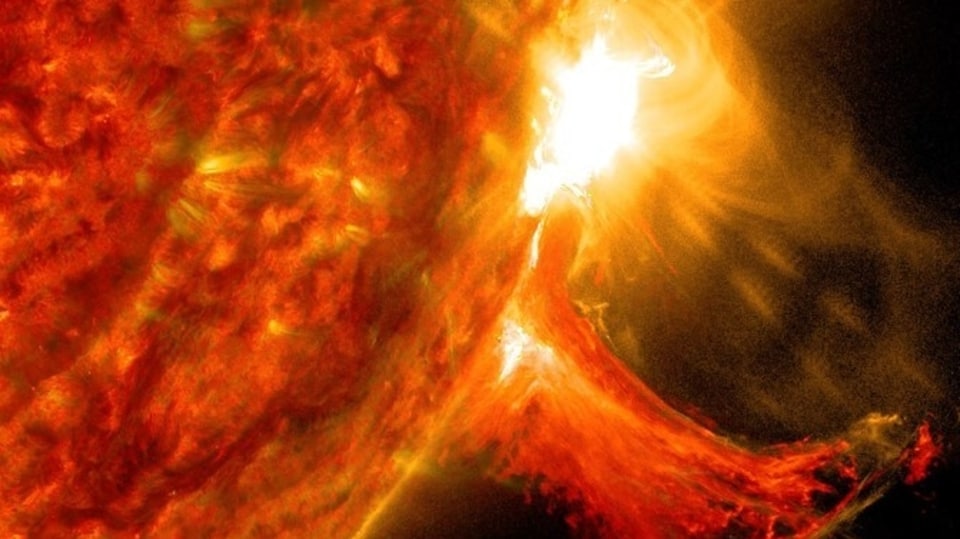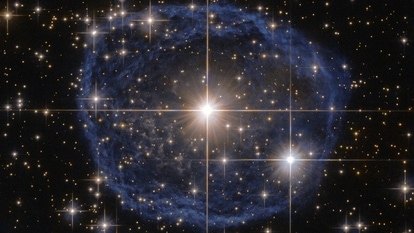Solar Storm Alert! Sun has been in violent mood, says NASA, but Earth has escaped from danger
Our Sun has been exploding furiously throughout February, NASA said. Fortunately, Earth has escaped these solar storms. But there are reasons to worry.

The Sun has been extremely violent this week. Our illuminating star has fired off a series of horrendously large explosions into space, says NASA. Fortunately, for the Earth, these explosions have not been shot out in the direction of the Earth. If these were directed at the Earth, they may well have created the largest ever solar storms to hit our planet. The consequences for Earth would have been heavy. The Sun had fired off this massive burst of energy from its far side. NASA's STEREO-A spacecraft recorded a huge outburst of coronal mass ejection (CME) in the early hours of February 15. CMEs are giant explosions that send huge burst of energy in the form of plasma hurtling through space. If it collides with Earth, the plumes of material can trigger solar storms and these can knock out all forms of communications on Earth, satellites and even power grids. For instance, the recent solar storm destroyed a number of satellites in space. However, this week, CME was fired from the side of the Sun that faces away from our planet and hence, posed no threat
Notably, the CME eruption appeared to be one the most powerful category of which our Sun is capable, according to spaceweather.com. This horrifically large eruption has been rated as an X-class flare by NASA based on its size. Astronomer Dr Tony Phillips said: “This CME will not hit Earth; it is moving away from, not toward our planet.” He, however, added that if such a CME did strike, it could produce a very strong geomagnetic storm on Earth.
Astronomer Junwei Zhao of Stanford University's helioseismology group told SpaceWeather.com that this was only the second far side active region of this size since September 2017 and if this eruption continues as the Sun rotates to the Earth-facing side, it could send solar flares heading for us.
According to Dr. Phillips, it's been a busy month of solar activity as our star has erupted almost every day in the month of February. Some of the days have even witnessed multiple solar flares. Among all the solar flares, three have fallen into the second-most powerful flare category, M-class flares. Not only February but January too had five M-class flares and one of them even led to a solar storm on January 29 that knocked 40 SpaceX satellites out of action.
Though it might sound frightening, there's nothing to worry about as of now. It's our Sun's normal activity and astronomers have been keeping a close eye on the Sun.
What are geomagnetic storms?
Geomagnetic storms are caused by CMEs that generate huge solar storms that are propelled towards Earth. The CME is a huge expulsion of hot material called plasma from the Sun's outer layer. When these solar storms smash into the Earth's atmosphere and cause a geomagnetic storm. Most of the solar storm's energy is absorbed there. However, if the solar storm is too strong to be absorbed by our protective atmosphere, the energy reaches the Earth and these can cause severe damage to all electrical infrastructure. If they are mild, then the effect appears as colorful auroras. Each solar storm is measured by severity on a scale of one to five, with a G1 depicted as “minor” and a G5 as “extreme”.
Catch all the Latest Tech News, Mobile News, Laptop News, Gaming news, Wearables News , How To News, also keep up with us on Whatsapp channel,Twitter, Facebook, Google News, and Instagram. For our latest videos, subscribe to our YouTube channel.
































